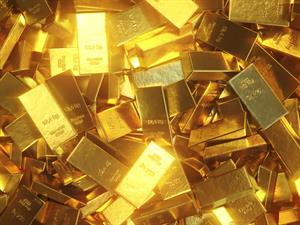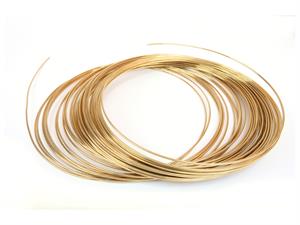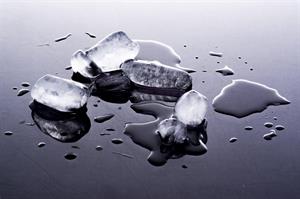PDF chapter test TRY NOW
Any substance that changes its physical properties such as size, shape, colour, state etc., is known as physical change.
Here, no new substance is formed. These changes are reversible (i.e. they can be brought back to their original form) in nature.
Example:
Crushing a sheet of aluminium foil - Change in size.
Melting an ice cube - Change in the state.
Casting silver in a mould - Change in shape.
Melting an ice cube - Change in the state.
Casting silver in a mould - Change in shape.
Note: Physical properties include lustre, malleability (drawn into think sheets), ductility (drawn into a thin wire), density, viscosity, solubility, mass, volume, etc.

Lustre of gold

Ductility of copper
The changes in these physical properties are referred to as physical changes.
Characteristics of physical change:
1. No new substance is formed:
The change is where the physical properties are changed for a substance, and no new substance is formed.

Physical change
For instance, the ice cube melts from water. Here only the state change occurs, which means the molecules remain the same.
2. Reversible change:
The term itself explains the change. Here, the product formed can be reversed back.

Melting ice-cream can again be reversed back by freezing it.
The ice cube melts when heated and forms water again. We can freeze the water to form ice again. Here the change is temporary.
Similarly, when heated, the water forms water vapour, and when the vapour is cooled, it forms water again.
3. Chemical property of substance remains the same:
The melting of ice from solid-state to liquid state is a physical change.

Melting of ice
Here, the state is changed, whereas the chemical composition does not. The origami made in papers change only their shape and not their chemical properties.
4. Change in colour, shape, size, and state:

Folding the paper
The changes formed by folding the paper, applying paint on nails, cutting vegetables, inflating a balloon are some examples of changes in size, shape, and colour of the substance or materials.
5. No energy is liberated:
5. No energy is liberated:

Paper set origami
In these changes no heat, light, and sound etc., are formed, which means there is no release of energy that takes place. In these changes, only the physical properties are altered.
Example:
The change in phases of matter, cutting wood, trimming nails etc., are physical changes where no energy is released.
Physical change
